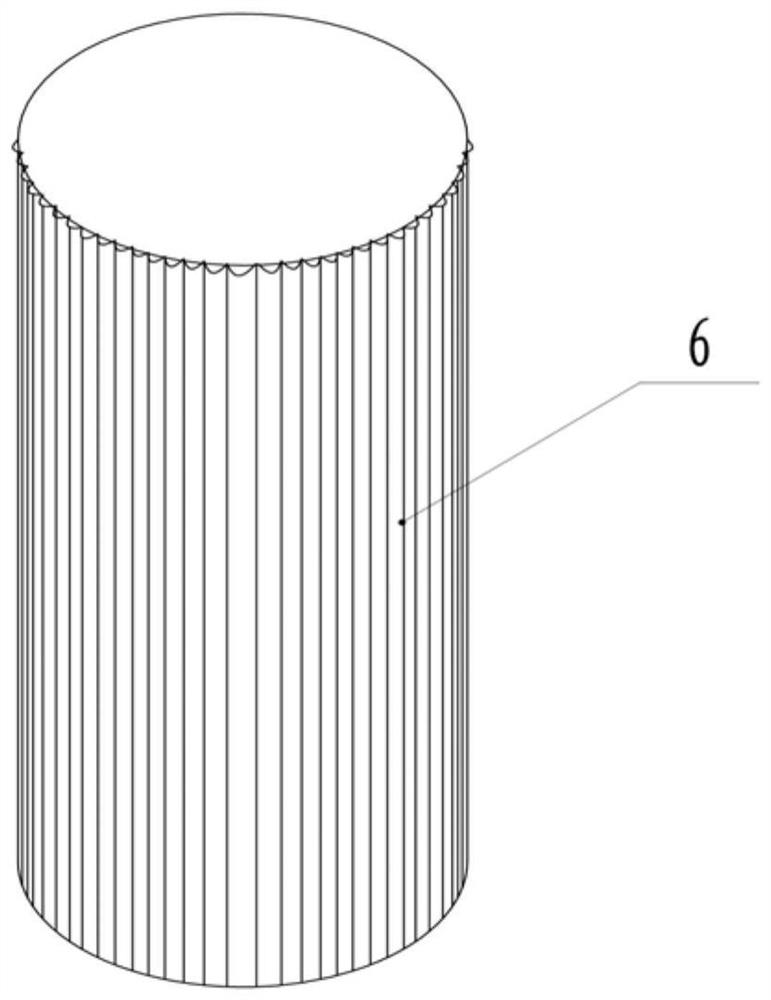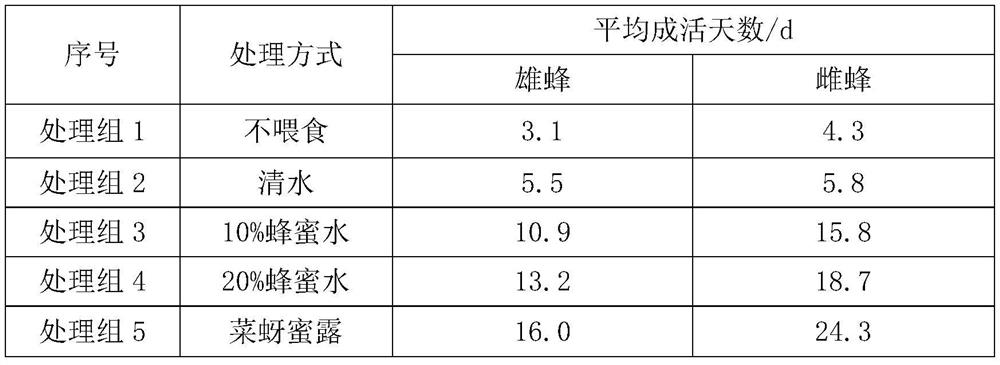Breeding method of tung tree inchworm diplodia longibrachiata
A technology of the tung inchworm and the small bee, which can be used in animal husbandry and other directions, and can solve the problems of unreported research on biological characteristics and lack of large-scale breeding.
- Summary
- Abstract
- Description
- Claims
- Application Information
AI Technical Summary
Problems solved by technology
Method used
Image
Examples
Embodiment 1
[0030] A kind of breeding method of the tung inchworm long-striped Acanthus tungii, comprising the steps of:
[0031] Step I: Land consolidation and eucalyptus seedling colonization management
[0032]Select a piece of land with relatively gentle terrain, and use nitrogen, phosphorus and potassium compound fertilizer and decomposed organic fertilizer as base fertilizer for deep plowing of the land. Plant a row of eucalyptus seedlings at an interval of 1.2 meters, and control the plant spacing of each row to be 1.2 meters. Dig a trench with a depth and width of 500*600 between each row, and plant the excavated soil on the roots of the eucalyptus seedlings, which is beneficial for later fertilization and irrigation.
[0033] After planting, fill the seedlings according to the survival of the eucalyptus seedlings. After one year of growth, the eucalyptus seedlings will reach a height of 6-8 meters, and the tops will be cut off. The top of the eucalyptus is tied with a nylon rop...
experiment example 1
[0063] Experimental example 1: Fresh-keeping experiment of eucalyptus leaves
[0064] Eucalyptus leaves are mainly fed by tung loopers. In order to prolong the preservation time of eucalyptus leaves, different treatments are carried out on eucalyptus leaves. The treatment methods are as follows:
[0065] Treatment group 1: put eucalyptus shoots with fresh young leaves in dry glass, and place them in tung looper breeding cages, control indoor light L:D=16:8, temperature 25±3°C, humidity 75°C ±5%, observe the preservation days and leaf fall time.
[0066] Treatment group 2: put eucalyptus twigs with fresh young leaves in dry glass, seal with plastic sealing film, and place them in tung looper breeding cages, control indoor light L:D=16:8, temperature 25 ±3°C, humidity 75±5%, observe the preservation days and leaf fall time.
[0067] Treatment group 3: put the eucalyptus twigs with fresh young leaves in a water cup, and place them in a tung looper breeding cage, control indoor ...
experiment example 2
[0071] Experimental example 2: The tendency test of the tung looper to the egg collection device
[0072] Experimental design: put different egg-collecting objects in the breeding cages, and the adults of Tungia tungii can complete mating and lay eggs within 48 hours after eclosion. After 48 hours, observe and record the number of egg masses, egg grains and distribution on each egg-collecting device shape.
[0073] Table 2
[0074] serial number Egg collection Number of egg blocks / block egg / grain Distribution shape 1 Nylon gauze 3 4400 dense + scattered 2 Corrugated paper egg collecting device 86 44200 Scattered bands 3 Eucalyptus branches / leaves 13 8600 dense strip 4 Auxiliary device plastic case 5 2700 dense round shape 5 Agricultural film 2 660 dense round shape
[0075] As can be seen from the data in Table 2, what serial number 2 adopted is a corrugated paper egg collection device, and the corrugated...
PUM
 Login to View More
Login to View More Abstract
Description
Claims
Application Information
 Login to View More
Login to View More - R&D
- Intellectual Property
- Life Sciences
- Materials
- Tech Scout
- Unparalleled Data Quality
- Higher Quality Content
- 60% Fewer Hallucinations
Browse by: Latest US Patents, China's latest patents, Technical Efficacy Thesaurus, Application Domain, Technology Topic, Popular Technical Reports.
© 2025 PatSnap. All rights reserved.Legal|Privacy policy|Modern Slavery Act Transparency Statement|Sitemap|About US| Contact US: help@patsnap.com



